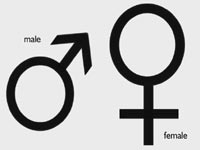Adolescence is the transition period between childhood and adulthood (Latin = Grow in to maturity)
Adolescence is a unique time in life as many physical, intellectual, social, emotional and sexual "firsts" are achieved.
Physical Development 
Puberty (Latin = grow hairy) defines a number of physical changes characterized by a growth spurt and the development of secondary sex characteristics
Psychologists are primarily interested in the way adolescents react to these changes
The following psychological developments accompany puberty:
Increased self consciousness (the spot light effect)
Mood swings
Changing relationships with parent and peers
The timing of puberty is another key factor as very early or very late puberty can cause some anxiety with males experiencing the more adverse effects.
Intellectual development

There is a qualitative shift in development as adolescents begin to think more hypothetically, introspectively and idealistically.
There is also the development of a more mature morality based on beliefs of fairness, justice and universal laws of morality.
Social Development

Psychologists are divided on the key issue as to whether adolescence is a time of storm and stress or one of challenge and achievement.
Erikson agues that adolescence is a period when individuals must search for their identity so that they can achieve self-understanding, make commitments in life and a gain a sense of “togetherness”.
Peterson argues that only a small percentage of adolescents experience storms, crisis and turmoil.
Mead saw adolescence as a time of experimentation and fun.
There are important gender differences in the way teenagers deal with stress: females tend to have negative internal behaviors reactions e.g. depression while male tend to have negative external behaviors disobedience and rebellion.
Sexual Development

Sexuality is of high concern to adolescence. It is problematic for a number of reasons:
Most societies are still not open concerning sexual matters
Teenagers receive mixed messages from parents, schools, the media and peers
AIDS means that death and sex are now intertwined
While sexual identify is a more simple biological concepts, the sex role, i.e. acceptable behavior for men and women, is more the product of nurture and culture.
A greater degree of flexibility now exists in sex role behaviors. Strict masculine and feminine roles are not as rigidly imposed and the adoption of more androgynous roles has lead to greater depth of emotional response on the part of both sexes.











